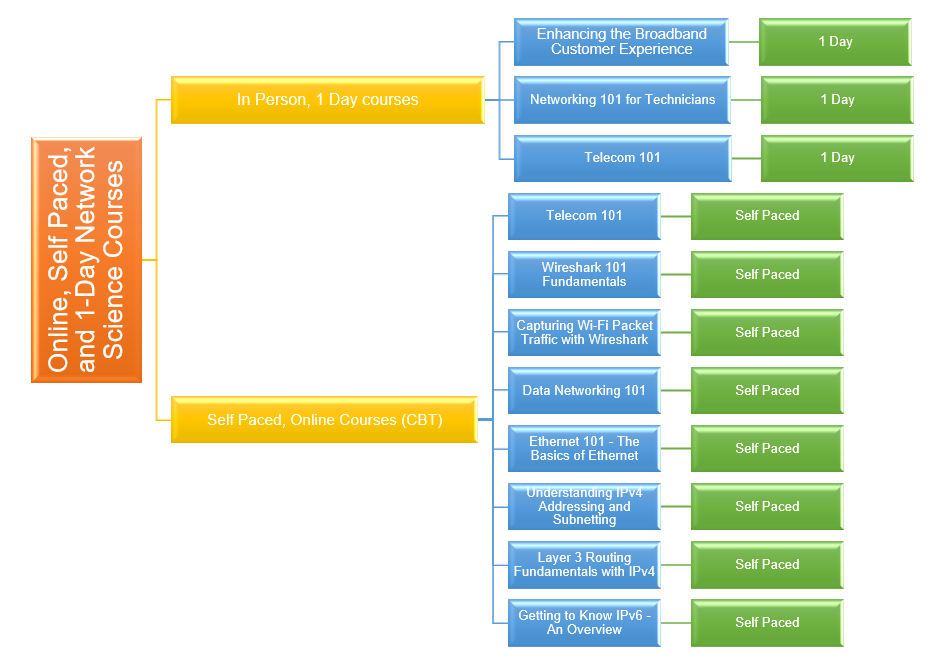This one-day course focuses on the knowledge and understanding needed by the Customer Support team (Customer Service Reps and Technical staff who have direct customer contact) to elevate their customer’s Broadband experience. We will use real life examples of problems to illustrate solutions, explain network operations, and build our skill set to provide the best broadband customer support practices. We start with a basic understanding of the technical aspects of broadband, including service via fiber vs copper. We will discuss the various types of services available over broadband, and the various speeds they demand, so we understand what to recommend and enhance the customer experience. We will explain how the customers’ use of the broadband service will determine the level of service they need. Course Details here.
- Teacher: Andrew Walding
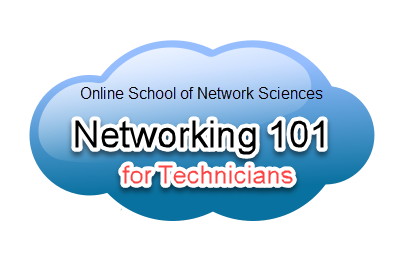
Technicians need a solid foundation of understanding how the Internet works, what protocols are involved, and how they can use their Windows PC’s to test and examine networking functions.
This one day Networking 101 course explains and demystifies the terms used, and the technologies, functions and components that make up the Internet. So much has happened historically, the buzz words and three letter acronyms that the experienced take for granted can be overwhelming. Course Details here.
- Teacher: Andrew Walding
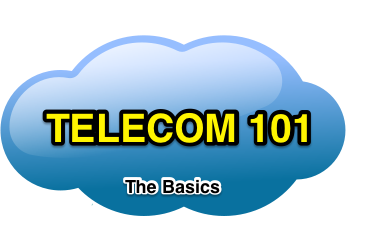 Understanding the basics of the rapidly evolving Telecommunications Networks is important to Service Provider new hires, technical and customer service employees. This one day Telecom 101 - taught in person - course explains and demystifies the terms used, and the technologies, functions and components that make up the complex world of the voice and data telecommunications networks. So much has happened historically, the buzz words and three letter acronyms that the experienced take for granted can be overwhelming. From Plain Old Telephone Service, to the Internet, to the regulatory environment, this course provides a complete survey and reference for the terms, the network equipment functions, and the components that make up the complex world of voice and data telecommunications. Course Details here.
Understanding the basics of the rapidly evolving Telecommunications Networks is important to Service Provider new hires, technical and customer service employees. This one day Telecom 101 - taught in person - course explains and demystifies the terms used, and the technologies, functions and components that make up the complex world of the voice and data telecommunications networks. So much has happened historically, the buzz words and three letter acronyms that the experienced take for granted can be overwhelming. From Plain Old Telephone Service, to the Internet, to the regulatory environment, this course provides a complete survey and reference for the terms, the network equipment functions, and the components that make up the complex world of voice and data telecommunications. Course Details here.
- Teacher: Andrew Walding
 Understanding the basics of the rapidly evolving Telecommunications Networks is important to Service Provider new hires, technical and customer service employees. This one day Telecom 101 course explains and demystifies the terms used, and the technologies, functions and components that make up the complex world of the voice and data telecommunications networks. So much has happened historically, the buzz words and three letter acronyms that the experienced take for granted can be overwhelming. From Plain Old Telephone Service, to the Internet, to the regulatory environment, this course provides a complete survey and reference for the terms, the network equipment functions, and the components that make up the complex world of voice and data telecommunications. Course Details here.
Understanding the basics of the rapidly evolving Telecommunications Networks is important to Service Provider new hires, technical and customer service employees. This one day Telecom 101 course explains and demystifies the terms used, and the technologies, functions and components that make up the complex world of the voice and data telecommunications networks. So much has happened historically, the buzz words and three letter acronyms that the experienced take for granted can be overwhelming. From Plain Old Telephone Service, to the Internet, to the regulatory environment, this course provides a complete survey and reference for the terms, the network equipment functions, and the components that make up the complex world of voice and data telecommunications. Course Details here.
- Teacher: Andrew Walding
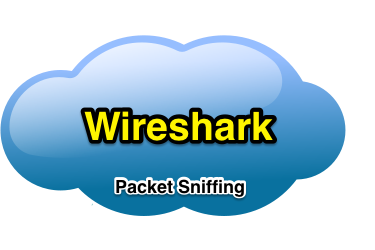 This Wireshark 101 course is a fast start to using Wireshark for packet analysis. Basic configuration and customization of capturing packets, displaying/filtering packets, and customizing the environment is covered. Even if you have used Wireshark before, there are critical usage tips and methods that will change the way you use this tool. Course details here.
This Wireshark 101 course is a fast start to using Wireshark for packet analysis. Basic configuration and customization of capturing packets, displaying/filtering packets, and customizing the environment is covered. Even if you have used Wireshark before, there are critical usage tips and methods that will change the way you use this tool. Course details here.
- Teacher: Andrew Walding

Follow me as I show you how to properly capture WLAN/Wi-Fi traffic on Windows, MAC OSX, or (Debian) Linux machines using Wireshark. This is not as easy as it appears, and this course will break down the challenge as well as arm you with what you need to both capture and start analyzing WLAN/Wi-Fi traffic.
- Teacher: Andrew Walding
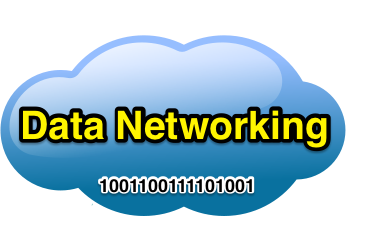 This course is an introduction to Data Networking principles and concepts. From understanding the layered model of communications and how TCP/IP fits that model, to understanding how TCP/IP packets are forwarded through the network. These basics are essential comprehension as to how the Internet and Ethernet technologies work together. Course Details here.
This course is an introduction to Data Networking principles and concepts. From understanding the layered model of communications and how TCP/IP fits that model, to understanding how TCP/IP packets are forwarded through the network. These basics are essential comprehension as to how the Internet and Ethernet technologies work together. Course Details here.
- Teacher: Andrew Walding
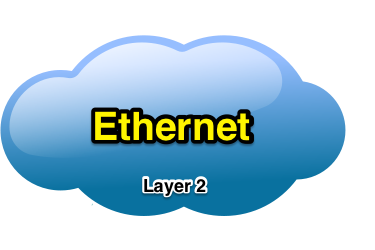 This course is an introduction to Ethernet principles and concepts. From understanding the structure of Ethernet Frames, to understanding how Ethernet behaves (including protocols like ARP and Spanning Tree), this course provides a solid understanding of Ethernet fundamentals. Course Details here.
This course is an introduction to Ethernet principles and concepts. From understanding the structure of Ethernet Frames, to understanding how Ethernet behaves (including protocols like ARP and Spanning Tree), this course provides a solid understanding of Ethernet fundamentals. Course Details here.
- Teacher: Andrew Walding
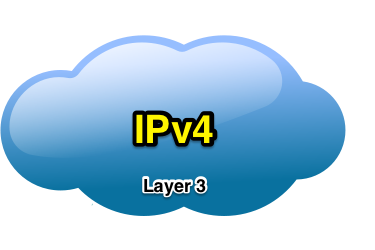 This course provides the essential knowledge and skills in handling IPv4 Addressing. Anyone working with the Internet has to understand the IPv4 Addressing schema, and the history of addressing changes that shape the way we use IPv4 in networks. From Classful, to Classless, Subnetting and Supernetting, the IPv4 addressing schema can be complex, but in this course we will provide you the tools and skills to quickly conquer this technology so you can put it to use in your daily activities. Course Details here.
This course provides the essential knowledge and skills in handling IPv4 Addressing. Anyone working with the Internet has to understand the IPv4 Addressing schema, and the history of addressing changes that shape the way we use IPv4 in networks. From Classful, to Classless, Subnetting and Supernetting, the IPv4 addressing schema can be complex, but in this course we will provide you the tools and skills to quickly conquer this technology so you can put it to use in your daily activities. Course Details here.
- Teacher: Andrew Walding
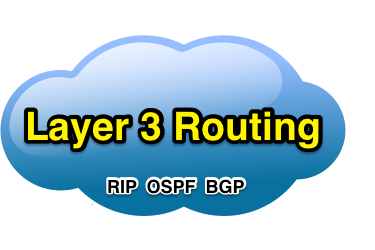 This course focuses on the functions that Routers perform in an Internet, and the protocols they use, such as RIP, OSPF and BGP, in the control plane to make Shortest Path First decisions and deliver packets to their intended destinations as quickly and efficiently as possible. Understanding this process is critical in understanding how the Internet actually works. Course Details here.
This course focuses on the functions that Routers perform in an Internet, and the protocols they use, such as RIP, OSPF and BGP, in the control plane to make Shortest Path First decisions and deliver packets to their intended destinations as quickly and efficiently as possible. Understanding this process is critical in understanding how the Internet actually works. Course Details here.
- Teacher: Andrew Walding
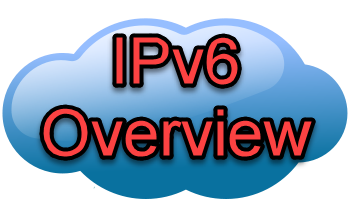 This course provides the initial knowledge and skills in learning IPv6. We have run out of IPv4 public addresses and IPv6 is the Next Generation IP protocol that will take us far into the future. This course is an overview, an introduction, that will serve as a great foundation for understanding what is new in IPv6. It is not even close to being the same as IPv4. Course Details here.
This course provides the initial knowledge and skills in learning IPv6. We have run out of IPv4 public addresses and IPv6 is the Next Generation IP protocol that will take us far into the future. This course is an overview, an introduction, that will serve as a great foundation for understanding what is new in IPv6. It is not even close to being the same as IPv4. Course Details here.
- Teacher: Andrew Walding
